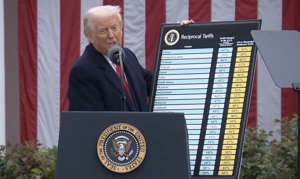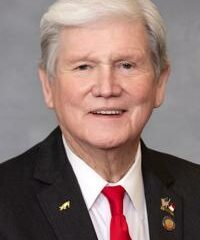(The Center Square) – Reversing Biden administration policies that halted offshore leasing, prompting lawsuits and restricting oil and natural gas development, the Trump administration is expanding offshore capabilities.
Interior Secretary Doug Burgum directed the Bureau of Ocean Energy Management to hold the administration’s first offshore lease sales in the Gulf of America, with the first proposed notice of sale slated for June.
“By continuing to expand offshore capabilities, the United States ensures affordable energy for consumers, strengthens domestic industry and reinforces its role as an energy superpower,” the Interior Department says. “Opening the Outer Continental Shelf is central to this strategy as it unleashes domestic energy potential that had been blocked under the previous administration,” and is expected to generate tens of thousands of high-paying jobs throughout the industry.
The BOEM also released a new analysis stating that a significant increase of estimated oil and natural gas reserves exists in the Gulf of America Outer Continental Shelf. BOEM’s updated assessment evaluated more than 140 oil and natural gas fields, identifying 18 new discoveries, and analyzed more than 37,000 reservoirs across 1,336 fields in the Gulf.
It says there’s an “additional 1.3 billion barrels of oil equivalent since 2021, bringing the total reserve estimate to 7.04 billion barrels of oil equivalent. This includes 5.77 billion barrels of oil and 7.15 trillion cubic feet of natural gas – a 22.6% increase in remaining recoverable reserves.”
“This new data confirms what we’ve known all along – America is sitting on a treasure trove of energy, and under President Trump’s leadership, we’re unlocking it,” Burgum said. “The Gulf of America is a powerhouse, and by streamlining permitting and expanding access, we’re not just powering our economy – we’re strengthening our national security and putting thousands of Americans back to work.”
The comprehensive review added 4.39 billion barrels of oil equivalent in original reserves, BOEM found. “After subtracting production of 3.09 billion barrels of oil equivalent since 2020–2021, the net increase reflects continued opportunity and momentum in offshore development,” it says.
“The Gulf of America is delivering 14% of the nation’s oil,” BOEM Gulf of America Regional Director Dr. James Kendall said. “These updated estimates reaffirm the Gulf’s vital role in ensuring a reliable, affordable domestic energy supply.”
The BOEM oversees nearly 3.2 billion acres of the Outer Continental Shelf, with roughly 160 million acres located in the Gulf.
“Energy dominance is a pillar of U.S. economic strength and global leadership,” the Interior Department argues. “By expanding offshore capabilities, the United States ensures affordable energy for consumers, creates high-paying jobs, and reduces dependence on foreign adversaries. … Expanded leasing is projected to create tens of thousands of jobs across exploration, production, logistics and supply chains — revitalizing coastal economies and fueling American innovation.”
Shell Offshore Inc., a subsidiary of Shell plc, also announced it is beginning production at Dover, a second subsea tieback connecting new wells to existing infrastructure of its Appomattox production hub in the Gulf of America. Dover’s estimated peak production is 20,000 barrels of oil equivalent a day, it says.
Shell is the leading deep-water operator in the Gulf of America; Dover was discovered under the first Trump administration in 2018.
It’s located in Mississippi Canyon, roughly 170 miles offshore southeast of New Orleans.
Shell estimates that Dover will “contain 44.5 million barrels of oil equivalent recoverable resources, adding stable, secure energy resources.”
Outer Continental Shelf oil and gas activities have generated billions of dollars in revenue from lease sales, rental fees and royalties to the federal government and states, helping to fund infrastructure, education and public services and wildlife conservation. They also help strengthen U.S. energy independence, national security and global stability, by reducing reliance on foreign producers, the Trump administration argues.
Offshore production in the Gulf of America accounts for the third greatest volume in the country, of nearly 1.8 million barrels of oil per day, according to Energy Information Agency data from January. The greatest volume is produced in the Permian Basin in west Texas, which leads the U.S. in oil and natural gas production, The Center Square reported.











































